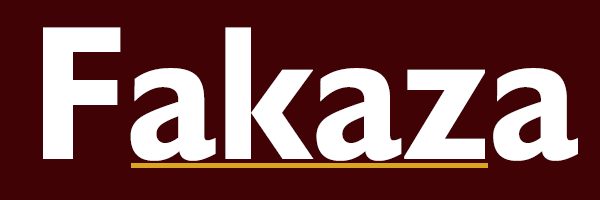Lifestyle
The most expensive traditional meal in Zululand

When it comes to traditional Zulu cuisine, there is one dish that stands out not only for its rich flavor but also for its cultural significance and the effort involved in its preparation: inyama yenhloko, or cow’s head.
This is considered one of the most expensive and prestigious traditional meals in Zululand, and its preparation is a labor of love, often reserved for special occasions and ceremonies.
What is Inyama Yenhloko?
Inyama yenhloko is the Zulu name for cow’s head, which is slow-cooked to tender perfection. The cow’s head is a symbol of wealth and status, and its preparation requires both skill and time. The dish is typically cooked over several hours, allowing the meat, tongue, and even the brain to become incredibly soft and flavorful. It is a communal dish, often shared among family and community members during important events, such as weddings, funerals, or traditional ceremonies.
Why is Inyama Yenhloko Expensive?
There are several reasons why inyama yenhloko is considered one of the most expensive meals in Zulu tradition:
-
Cost of the Ingredients: The primary ingredient is a whole cow’s head, which can be a significant expense. Unlike standard cuts of meat, purchasing an entire head requires careful planning and budget allocation. While not as expensive as prime cuts of beef, the cow’s head is not a regular grocery item for most families. It is a rare and special purchase, often reserved for large gatherings or important celebrations.
-
Preparation Time and Expertise: Cooking a cow’s head is not a simple process. It involves extensive preparation and a thorough knowledge of how to handle the different parts of the head. The brain, eyes, tongue, and meat are all cooked differently and require special care to ensure they are tender and flavorful. In addition, the entire process can take several hours, sometimes even a full day. The head is typically boiled or roasted with a mixture of spices and herbs that enhance the flavors, making it both a delicate and time-consuming dish to prepare.
-
Cultural Significance: Inyama yenhloko is more than just a meal; it is a cultural experience. The dish is often served during important Zulu ceremonies, such as weddings, coming-of-age celebrations, and community feasts. It is a sign of respect, wealth, and unity within the family or community. The expense of this meal is symbolic — it represents the effort, sacrifice, and pride that go into maintaining cultural traditions and strengthening familial ties.
-
Communal Nature of the Dish: Unlike meals that are meant to serve an individual or small family, inyama yenhloko is often prepared in large quantities to feed a large group. This communal aspect makes it a meal meant to bring people together, fostering a sense of unity and sharing. The cost of feeding many people with such a rich, labor-intensive dish adds to its expense.
The Preparation Process
Preparing inyama yenhloko is a long and detailed process, and it begins with cleaning and preparing the cow’s head. The head is thoroughly washed to remove any impurities, and the different parts of the head are carefully separated for individual cooking. The tongue and brain, for instance, are delicacies on their own and require particular attention.
Once cleaned, the head is placed in a large pot with a blend of traditional spices, herbs, and vegetables such as onions, garlic, ginger, and sometimes chili. It’s slowly boiled for hours until the meat becomes tender and the flavors deeply infused. The brain and tongue are often prepared separately, as they require specific cooking times to achieve the perfect texture and flavor.
After cooking, the inyama yenhloko is served with amasi (fermented milk), a staple in Zulu meals, and often accompanied by umngqusho (samp and beans) or pap (maize porridge). These side dishes complement the richness of the cow’s head and make the meal even more filling.
The Role of Inyama Yenhloko in Zulu Culture
In Zulu culture, the act of preparing and sharing inyama yenhloko is a ceremonial gesture that transcends the food itself. The preparation of this dish is an important social event, where family members come together to assist in the cooking, often sharing stories, laughter, and even dancing as part of the celebration. In some cases, inyama yenhloko is presented as a symbol of honor, especially for elders or respected members of the community.
The dish also plays an important role in rites of passage. For example, during a wedding, the cow’s head may be presented as part of the celebration of the union. It is a way of showing respect to both families and reinforcing the bonds between them. The communal nature of the meal reflects the Zulu value of ubuntu — the belief that we are all interconnected and that the strength of the community lies in its ability to share.
A Taste of Heritage
Inyama yenhloko is more than just a meal; it is a window into the rich history, culture, and traditions of the Zulu people. From its preparation to its communal consumption, it represents the heart of Zulu hospitality and cultural pride. Whether enjoyed at a wedding, a celebration, or a traditional gathering, it remains one of the most treasured and expensive meals in Zululand.
While it might not be something you would cook every day, it’s a dish that brings people together, honors tradition, and highlights the deep connection between food and culture in Zulu life. If you ever have the chance to taste inyama yenhloko, know that you are not just eating a meal; you are experiencing a centuries-old tradition that celebrates the spirit of community, heritage, and the Zulu way of life.
This more detailed explanation provides a comprehensive look at inyama yenhloko as the most expensive and culturally significant traditional meal in Zululand, making it an ideal fit for a blog post.






